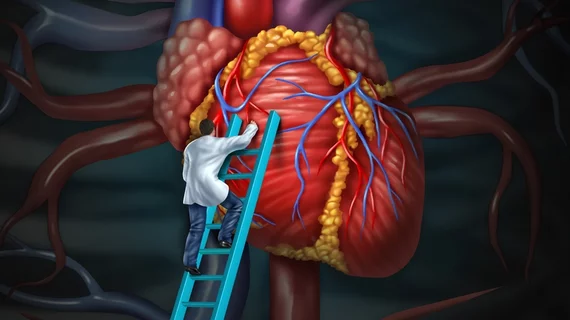One-year outcomes are similar between patients who do and do not undergo percutaneous coronary intervention (PCI) prior to transcatheter aortic valve replacement (TAVR), according to new findings published in JACC: Cardiovascular Intervention.
The study included 235 adult patients scheduled to undergo TAVR for severe aortic stenosis (AS). All patients were deemed suitable for PCI, and the group was randomized to either undergo PCI prior to TAVR or skip PCI altogether and just undergo TAVR. Care was provided from December 2012 to January 2019 at one of 17 facilities in the United Kingdom, France and Germany.
Overall, 119 patients underwent PCI prior to TAVR, and 116 patients did not. Patient characteristics such as age, weight and height were comparable between the two groups, though prior myocardial infarction and a history of peripheral vascular disease were more common among the patients randomized to not undergo PCI.
After one year, the study’s primary composite endpoint—all-cause mortality or rehospitalization—was seen in 41.5% of patients who underwent PCI prior to TAVR and 44% of patients who did not undergo PCI. The mortality rate was 13.4% for the PCI group and 12.1% for the no PCI group.
One-year outcomes were also similar when looking statistics related stroke, myocardial infarction and acute kidney injury.
However, the authors noted, bleeding events were more likely for patients who underwent PCI prior to TAVR.
“This finding is of particular importance, as we know that major bleeding and access site complications are associated with poor outcomes post-TAVR,” wrote first author Tiffany Patterson, a specialist at Kings College London, and colleagues. “These findings should therefore be factored into heart team decision making when contemplating pre-TAVR PCI in this patient cohort.”
The full analysis can be read here.

